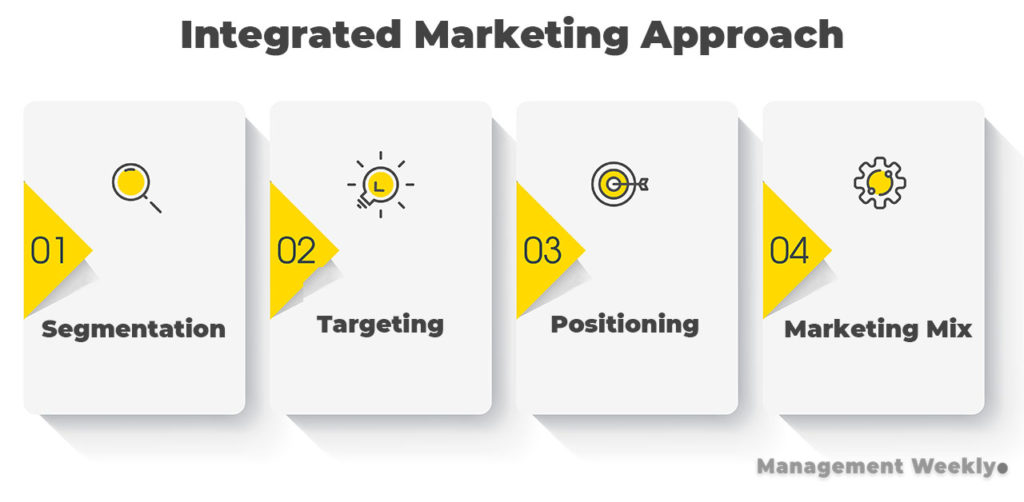The target market positioning, segmentation is one of the most powerful tools in marketing. We can use these tools to position and market our products better. Firstly, we shall take a look and try to understand what do we mean by these terms. Secondly, we will delve deeper into each one of these. Finally, we shall integrate all of these three things And learn about the STP or Segmentation, targeting, and positioning.
Contents
The need for developing a target market positioning and segmentation.
Marketing is all about selling products and services to the customers. However, one thing is very clear, not all customers are the same. Nevertheless, we can still form smaller groups of people who are quite homogeneous. What do you mean by this? A homogeneous group will have people who have similar characteristics and behaviors.
We create these groups based on characteristics like the demographic of our customers. We may also look at their psychographics and behavioral aspects. This first step is critical to understanding what our customer group really wants. For example, if we’re looking at customers who want a cheaper no-frills detergent, we cannot sell them the expensive one as easily. On the other hand, if we could have got customers who are ready to shell out more money for a premium detergent.
An overview of the entire marketing process
There are different ways to market a product. However, we are talking about an integrated approach. In this approach, we talk about the different steps that can lead to an integrated marketing strategy.

Segmentation
As we have briefly discussed earlier, segmentation is about partitioning your potential customers into smaller groups. However, even within segmentation, we have different steps. The first step is to identify the set of customers. Secondly, we select them based on the criteria. Thirdly we divide them into groups. You can use the MAAS system to identify the right set of customers:
| M | Measurability | Measuring the customer’s needs and spending habits |
| A | Accessibility | How well can we approach the set of customers? |
| A | Actionability | Can we develop a compelling selling point for the given customers? |
| S | Sustainability | Do we deliver more value to this specific group by creating it? |
It is getting a little repetitive, but again we have two different ways of approaching the segmentation process:
- Classical approach or the observational approach
- Modern approach or the analytical approach
Classical approach
The classical approach is the older approach that we follow in marketing. In this approach, we tried to look at the customers’ behavior and we observe how they interact with specific products. This gives us an idea into what goes on inside their minds and what kind of customers look for what kind of product features. We also get an understanding of their spending patterns. Although this method is quite robust, it takes time.
Modern approach
Alternatively, we can also try the modern approach. In this approach, we collect data from the market. This data is analyzed and. They get to the segmentation. The analytical approach gives us the advantage of looking at different kinds of feasibilities at the same time. Firstly, we can crack the economist’s visibility of our product by understanding the price that the customer is ready to pay for our products. Secondly, we can also understand. Their purchasing behavior. This helps us create a compelling product for the market. Additionally, it also has an advantage of higher potential revenue for the form.
Targeting
We decide on the target market based upon the segmentation that we have done in the previous step. Once we are done with identifying the target market, we can then decide on how to communicate our products to them. The targeting strategy will depend a lot on the segment as well as the type of product that we are trying to sell.
For example, You may see large banners for an upcoming SUV Outside the airport. However, you will rarely see an advertisement for a cookie, on the billboards. Nevertheless, you can see these kinds of ads in the newspapers. Alternatively, there are other modes of targeting customers. One of the most recent forays in the targeting world has been the use of personalized marketing. Personalized marketing is about communicating with a specific type of customer. Now, it is easier to segment customers into much smaller groups. This is because we have got large amounts of data.
Positioning
Finally, we shall look at the third stage of the STP process. The positioning is all about projecting an image of your products and your company. The way the customer looks at your product will determine their behavior. Firstly, the customers get the cues about the product pricing from your positioning. Secondly, you communicate to your customers whether they should buy or not buy your products.
Within positioning we have got three different types:
- The first type of positioning is functional positioning. In this type of positioning, we try to project the useful aspects of our Products. Each customer has got specific needs and wants for the product. The functional positioning attempts to cater to these needs. For example, if a person is hungry, then they need food. The advertisement for a restaurant that focuses on satiating a person’s hunger is an example of functional positioning.
- The second type of positioning is symbolic positioning. In this type of positioning, the focus of the firm is to communicate the notional values of the product or the firm. We had discussed that there is a need to fulfilling the customers’ self-esteem. We do this through the symbolic positioning.
- Finally, we come to the third type of positioning, which is called the experiential positioning. As the name suggests, here the focus is there on evoking emotions. This type of positioning tries to make the customer feel nostalgic or emotional about an issue, memory, idea, or person.
Integrating target market positioning and segmentation into the marketing mix
Now let us look at how can we integrate all these three processes into the marketing mix. The marketing mix is developing a marketing strategy based on the 4Ps of marketing mix. It is evident that the different steps of the target market, positioning, and segmentation talk about the different Ps of marketing.
STP overall is focused around the promotional aspects. At the same time, segmentation also gives us an idea about the product itself. Similarly, targeting is about reaching out to a specific set of customers. Therefore, it talks about place and promotion. On the other hand, product positioning is about promotion.
